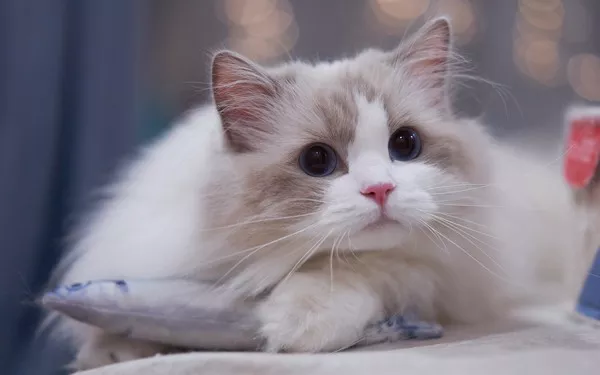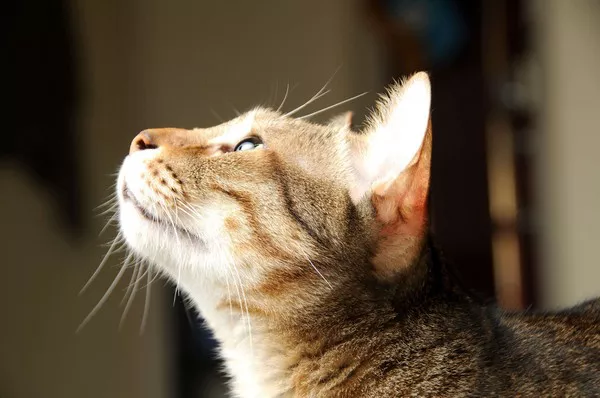Ragdoll kittens are known for their affectionate, calm demeanor and impressive size, making them unique among cat breeds. However, to support their steady growth, Ragdoll kittens require a carefully balanced diet. Feeding a Ragdoll kitten correctly involves more than simply placing food in their dish; it requires knowledge of their nutritional needs, an appropriate feeding schedule, portion sizes, and an understanding of the types of food best suited for them.
This guide outlines the essentials of feeding a Ragdoll kitten and explains the best practices for maintaining their growth, weight, and health throughout their formative years.
Nutritional Needs of Ragdoll Kittens
Ragdoll kittens have unique nutritional needs that set them apart from other kittens. They grow at a steady pace and tend to be larger than most breeds, so they require a diet rich in specific nutrients. Here’s a breakdown of the essential nutritional needs for Ragdoll kittens:
High-Quality Protein: Protein is crucial for kittens as it supports muscle development, energy production, and overall growth. Ragdoll kittens benefit from high-quality animal-based proteins, which provide the necessary amino acids for their developing bodies. Look for kitten foods where real meat sources, like chicken or turkey, are the primary ingredients.
Essential Fats: Fats are essential for providing energy and supporting brain and vision development in Ragdoll kittens. They also help maintain a healthy coat and skin, which is especially important for Ragdolls with their characteristic, luxurious fur. Omega-3 and Omega-6 fatty acids, commonly found in fish oils, are beneficial additions to a Ragdoll kitten’s diet.
Vitamins and Minerals: Vitamins and minerals such as calcium, phosphorus, and vitamins A, D, and E are critical for bone development, immune support, and proper organ function. Ragdoll kittens also need these nutrients in carefully balanced amounts to ensure they reach their full growth potential without nutritional deficiencies or excesses.
Hydration: Ragdoll kittens need adequate hydration to support their kidney function and general health. Incorporating wet food into their diet helps with hydration, as it has a higher moisture content than dry food, which is beneficial for overall digestion and urinary health.
Feeding Schedule for Ragdoll Kittens
A consistent feeding schedule is essential for Ragdoll kittens. Setting up a routine helps regulate their metabolism and digestion, which is especially important for their growth and energy levels.
For young Ragdoll kittens up to six months of age, feedings should occur three to four times per day. This schedule allows them to take in small, digestible meals that provide sustained energy throughout the day. After six months, you can reduce feeding frequency to two to three times daily, as they start to reach a stable growth rate.
Maintaining a regular feeding schedule not only helps with digestion but also supports their behavioral development. Feeding your kitten at the same times each day creates a predictable routine, which is comforting for kittens and helps reinforce positive feeding habits. Avoid irregular feeding times or sudden changes to their schedule to prevent digestive upset.
Portion Sizes for Ragdoll Kittens
Finding the right portion size for a Ragdoll kitten depends on several factors, including their age, weight, and overall activity level. The following guidelines offer a starting point, but always monitor your kitten’s appetite and body condition to make necessary adjustments.
1. Weight and Age Guidelines
Portion sizes will vary depending on your kitten’s age and weight. Generally:
2-3 Months Old: Feed approximately ¼ to ⅓ cup of high-quality kitten food per meal.
3-6 Months Old: Increase to ⅓ to ½ cup per meal as they grow.
6-12 Months Old: Feed around ½ cup per meal, adjusting as needed based on their activity level.
These amounts may need to be tailored according to the kitten’s specific needs, so pay close attention to their hunger cues and body condition.
2. Package Instructions
Use the feeding guidelines on the food packaging as a reference for portion sizes. These instructions are based on the food’s calorie density and nutrient profile, making them a useful starting point for determining how much to feed. Adjust portions based on your kitten’s growth rate, appetite, and activity level.
Types of Food for Ragdoll Kittens
The type of food you choose for your Ragdoll kitten can have a significant impact on their overall health and development. Ragdoll kittens benefit from a combination of wet and dry food, each offering unique benefits to their diet.
Wet vs. Dry Food
Both wet and dry foods offer benefits, and incorporating both into your kitten’s diet can help balance hydration and dental health.
Wet Food: This food type has a high moisture content, which helps keep kittens hydrated. Wet food is also easy to digest and often more palatable, making it ideal for kittens with small, sensitive stomachs.
Dry Food: While dry food has a lower moisture content, it provides dental health benefits by helping reduce plaque buildup. Dry food is also convenient for portion control and can be used as training treats.
A balanced combination of both wet and dry food can ensure that your Ragdoll kitten receives adequate hydration and dental care. Aim for a high-quality kitten food formulated specifically for their developmental needs.
High-Quality Kitten Food
Look for kitten food from reputable brands that list high-quality animal proteins as the main ingredients. Avoid foods with excessive fillers, artificial preservatives, or low-quality by-products. Formulas specifically made for kittens often contain balanced amounts of protein, fats, and essential nutrients that support growth and development.
Monitoring Growth and Weight
Monitoring your Ragdoll kitten’s weight and growth rate is essential to ensure they’re developing healthily. Regular weigh-ins and close observation of their eating habits can help you gauge whether adjustments in feeding portions are necessary.
Regular Weigh-Ins: Weigh your kitten weekly to monitor their growth and ensure they’re progressing according to breed standards. Healthy growth in Ragdoll kittens should be steady without excessive weight gain. Use a pet scale or a sensitive household scale to get accurate readings.
Consulting a Veterinarian: Regular veterinary check-ups are crucial, especially during a Ragdoll kitten’s growth phase. A veterinarian can provide personalized feeding recommendations based on your kitten’s specific health, activity level, and developmental needs.
Avoiding Overfeeding: Ragdoll kittens can be prone to obesity if overfed, so portion control and awareness of healthy feeding practices are vital for maintaining a balanced weight.
Healthy Weight Maintenance: Maintaining a healthy weight helps prevent joint issues, heart disease, and other obesity-related health problems. Regular exercise and appropriate portion control support long-term health and vitality.
Portion Control: To prevent overfeeding, always measure your kitten’s food portions rather than free-feeding (leaving food out all day). By offering measured meals at set times, you’re less likely to overfeed and can better monitor their intake.
Tips for Successful Cat Feeding for Ragdoll Kittens
Invest in high-quality kitten food: The best cat feeding practices for Ragdoll kittens begin with choosing foods that meet their nutritional needs and support healthy growth.
Maintain a consistent feeding schedule: Feed your Ragdoll kitten at the same times daily to establish a routine and promote regular digestion.
Observe their body condition: Adjust portion sizes based on their growth progress and energy levels. Ragdoll kittens should look well-rounded but not overweight.
Provide fresh water: Hydration is essential, so ensure your kitten has access to clean, fresh water throughout the day.
Use a food scale or measuring cups: For accurate portions, consider using a food scale to weigh dry kibble or wet food for each meal.
Conclusion
Feeding a Ragdoll kitten requires a balanced approach that combines high-quality food, consistent feeding practices, and attentive portion control. By providing the right amount of protein, fats, and essential nutrients in their meals, you can support your kitten’s growth and health through every stage. Remember, each kitten is unique, so stay attentive to their individual needs and consult your veterinarian for personalized guidance as your Ragdoll kitten matures into a happy, healthy adult.
Related Topics


























